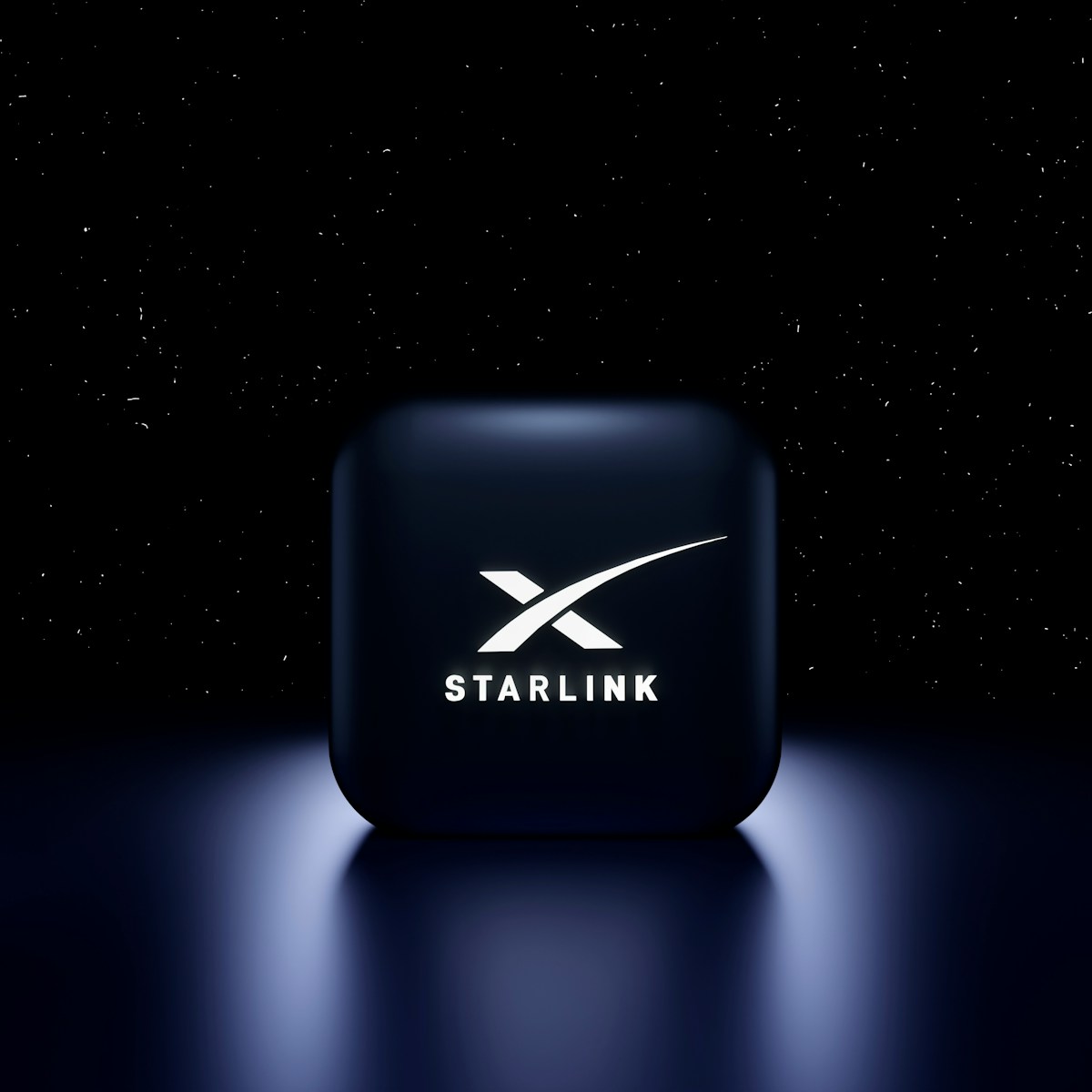The days of losing cell service in remote areas are coming to an end. SpaceX’s Starlink, slated to launch in July 2025, is set to revolutionize mobile connectivity with its Direct-to-Cell service. This groundbreaking technology will allow standard smartphones to connect directly to Starlink satellites in low Earth orbit (LEO), providing seamless coverage even in areas traditionally plagued by cellular dead zones.
How It Works: Turning Satellites Into Cell Towers
Starlink’s Direct-to-Cell service essentially transforms its satellites into space-based cell towers. Unlike conventional mobile networks, which rely on terrestrial infrastructure, Starlink uses satellites orbiting approximately 550 kilometers above the Earth. These satellites communicate directly with unmodified smartphones using existing cellular protocols like LTE, eliminating the need for additional hardware.
SpaceX received the green light for this service in November 2024 when the Federal Communications Commission (FCC) approved its application for direct-to-cell operations. The initial rollout will begin in the United States with T-Mobile’s Go5G Next customers, with plans to expand to AT&T and Verizon users through an optional add-on service. T-Mobile has already announced that this feature will be included at no extra cost for its premium subscribers, while others can access it for a monthly fee.

The Roadmap: From Text to Data to IoT
The initial phase of the Direct-to-Cell service will focus on text messaging. However, SpaceX has ambitious plans to roll out voice and data services by 2026. In parallel, the company is developing IoT (Internet of Things) capabilities to support applications like tracking shipping containers across oceans or monitoring remote infrastructure.
SpaceX is not alone in this endeavor. Companies like AST SpaceMobile and Lynk Global are also pursuing direct-to-cell services, aiming to bridge the digital divide in underserved regions. However, Starlink holds a significant advantage with its established satellite network of over 5,000 active satellites and its partnership with global telecom providers like One NZ in New Zealand.
Global Impact: Beyond the United States
While the U.S. launch garners significant attention, Starlink’s Direct-to-Cell service has international implications. In New Zealand, One NZ has already begun testing the service, providing connectivity to rural communities and remote islands. SpaceX plans to extend these services across multiple countries, targeting regions with limited or no cellular infrastructure.
In Africa, for instance, nearly 300 million people live in areas without mobile broadband coverage. Starlink’s ability to deliver direct-to-cell connectivity without the need for ground-based infrastructure makes it an attractive solution for telecom companies in these regions.
Technical Innovations: Falcon 9 and Starship Launches
Deploying this revolutionary service requires advanced satellite technology and a robust launch system. SpaceX initially plans to use its reliable Falcon 9 rockets to launch the Direct-to-Cell satellites. These satellites are equipped with advanced transceivers capable of communicating directly with smartphones while simultaneously connecting to Starlink’s internet backbone.
As Starship, SpaceX’s next-generation launch vehicle, becomes operational, the company will scale up its satellite deployments. Starship’s massive payload capacity will allow SpaceX to launch hundreds of satellites at once, accelerating the expansion of the Direct-to-Cell network.
Challenges and Future Prospects
Despite its promise, the Direct-to-Cell initiative faces several challenges:
- Spectrum Sharing: Starlink must collaborate with mobile network operators to share cellular spectrum effectively.
- Latency and Throughput: While LEO satellites reduce latency compared to traditional geostationary satellites, maintaining reliable voice and data services across millions of devices will require significant infrastructure upgrades.
- Regulatory Hurdles: Expanding the service globally will require navigating complex regulatory landscapes in multiple countries.
Nevertheless, SpaceX’s track record of rapid innovation and deployment positions it well to overcome these obstacles. The company has already demonstrated its capability by providing high-speed internet to remote communities, disaster-stricken areas, and maritime industries through its existing Starlink services.
A New Era of Connectivity
Starlink’s Direct-to-Cell service marks the beginning of a new era in mobile connectivity. By leveraging its growing satellite constellation, SpaceX aims to make cellular dead zones a thing of the past. From mountaintops and deserts to open oceans, staying connected will soon be as simple as turning on your smartphone—no matter where you are in the world.
Key Takeaways
- Starlink Direct to Cell launches July 2025 for T-Mobile customers with wider carrier support planned
- Standard smartphones can connect to Starlink satellites without additional hardware
- The service expands cellular coverage to remote areas through space-based cell towers
Exploring Starlink’s Direct-to-Cell Technology
SpaceX’s Direct-to-Cell technology transforms smartphones into satellite-connected devices without hardware modifications. This advancement brings connectivity to remote areas through specialized satellites and partnerships with major carriers.
Advancements in Satellite Connectivity
SpaceX has launched specialized satellites equipped with Direct-to-Cell capabilities into low Earth orbit. These satellites function as cellular towers in space, connecting directly to standard smartphones.
The network uses laser backhaul technology to maintain consistent connections between satellites. This reduces latency and ensures reliable service delivery.
Mobile dead zones are eliminated through a network of satellites that provide continuous coverage across geographic regions. The satellites operate on standard LTE protocols, making them compatible with existing devices.
Partnership with Mobile Carriers
T-Mobile leads the integration of Starlink’s Direct-to-Cell service in the United States. The service costs $15 monthly for T-Mobile customers and $20 for users on other networks.
During the beta phase, the service is free to all mobile phone users. This allows for extensive testing and optimization of the network.
SpaceX coordinates with global partners to expand coverage internationally. The FCC has approved commercial operations, setting the stage for widespread deployment.
Device Compatibility and IoT Integration
The service works with standard LTE phones, including popular models like:
- iPhone 14 series
- Samsung Galaxy A14
- Google Pixel devices
No special hardware or antennas are required. The EnodeB modem in satellites communicates directly with existing smartphone components.
IoT devices benefit from the network’s ubiquitous coverage. This enables remote monitoring and control applications in previously unreachable locations.
User Experience: Communication and Accessibility
Users can access basic communication services:
- Text messaging
- Voice calls
- WhatsApp messaging
- Basic web browsing
Connection speeds adapt based on satellite availability and atmospheric conditions. The service prioritizes essential communications in areas without traditional cellular coverage.
Signal strength varies with satellite positioning and weather conditions. The system automatically switches between satellites to maintain optimal connectivity.
Frequently Asked Questions
Starlink’s Direct-to-Cell service integrates satellite connectivity with standard smartphones through partnerships with major cellular carriers in multiple countries. The service aims to eliminate dead zones and provide text messaging capabilities starting in 2024, followed by voice and data services in 2025.
How much will Starlink Direct-to-Cell service cost for consumers?
The beta period offers free access to all mobile phone users. T-Mobile Go5G Next plan subscribers will receive the service as part of their plan.
T-Mobile customers on other plans can add the service for $15 per month.
Users from different carriers can access the service for $20 per month.
When is the expected launch date for Starlink’s Direct-to-Cell internet service?
The FCC approved Starlink’s Direct-to-Cell service in November 2023.
Limited testing has begun in the United States with T-Mobile and in New Zealand with One NZ.
The service will expand to include voice and data capabilities in 2025.
Are there specific cell phone models that are compatible with Starlink’s Direct-to-Cell service?
The service works with standard smartphones without requiring additional equipment or antennas.
Most modern cell phones with standard cellular capabilities can connect to the service.
What partnerships, if any, has Starlink announced with cellular carriers for the Direct-to-Cell service?
T-Mobile serves as the primary U.S. partner for Direct-to-Cell service.
One NZ provides service access in New Zealand.
SpaceX conducts testing with partners in Australia, Canada, Chile, and Japan, with plans to expand to more regions.
What internet speeds can be anticipated with Starlink’s Direct-to-Cell connection?
Initial service focuses on text messaging capabilities.
Voice and data services will roll out in 2025, with speeds dependent on satellite coverage and user location.
How will Starlink’s Direct-to-Cell internet differ from traditional cellular data services?
Direct-to-Cell connects phones directly to satellites, eliminating the need for ground-based cell towers.
The service fills coverage gaps in remote areas where traditional cellular infrastructure is unavailable.
Users can maintain connectivity in areas previously considered dead zones.







